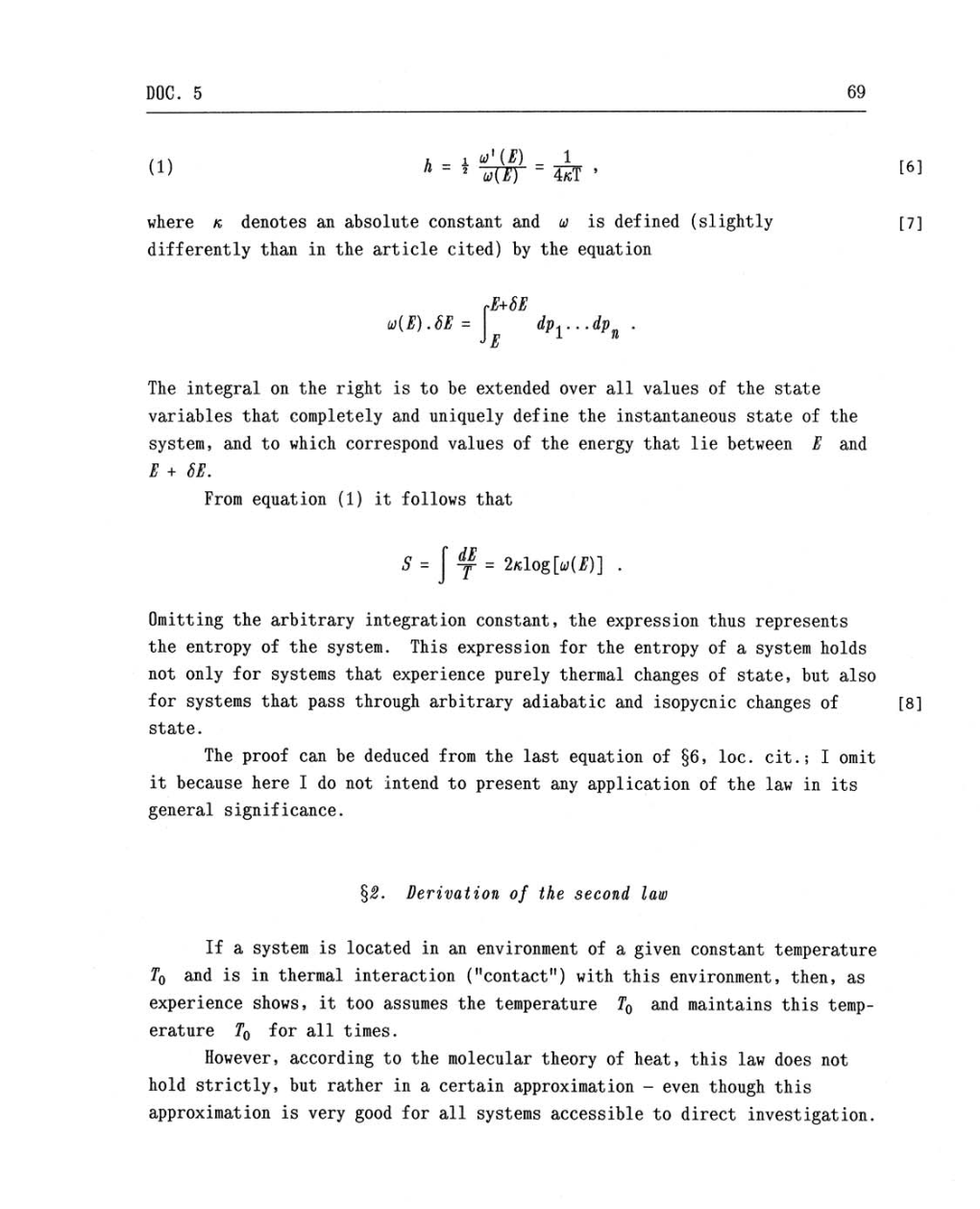DOC.
5
69
(1)
\ A
A
-
_
i
1
^'(^)
_
1
•
[6]
where
K
denotes
an
absolute
constant and
w
is defined (slightly
[7]
differently than in the article
cited)
by
the
equation
to(E).6E
=
rE+SE
dpv..dpn
The
integral
on
the
right
is
to be
extended
over
all values of the
state
variables that
completely
and
uniquely
define the instantaneous
state of
the
system, and to
which
correspond
values
of
the
energy
that lie
between
E
and
E
+
SE.
From equation (1)
it follows that
S
= J
^
=
2/clog|U)]
.
Omitting
the arbitrary
integration
constant,
the
expression
thus
represents
the
entropy
of the
system.
This
expression
for
the
entropy
of
a
system
holds
not
only
for
systems
that
experience purely
thermal
changes
of state,
but also
for
systems
that
pass
through
arbitrary adiabatic
and isopycnic
changes
of
[8]
state.
The proof
can
be deduced from the last
equation
of
§6,
loc. cit.;
I omit
it because here
I
do
not
intend
to present
any
application of the
law
in its
general
significance.
§2.
Derivation
of the second
law
If
a
system
is located in
an
environment
of
a
given
constant
temperature
T0
and
is
in
thermal interaction
("contact") with this
environment,
then,
as
experience shows,
it
too
assumes
the
temperature
T0
and
maintains this
temp-
erature
T0
for all
times.
However,
according
to
the molecular
theory
of heat, this
law
does not
hold
strictly,
but rather in
a
certain
approximation
-
even though
this
approximation
is
very good
for all
systems
accessible
to
direct
investigation.
